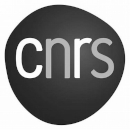What drives innovation in nuclear reactors technologies? An empirical study based on patent counts.
This paper examines the evolution of innovation innuclear power reactors between 1974 and 2008 in twelve OECD countries and assesses to what extent nuclear innovation has been driven by economic incentives, political decisions and safety regulation considerations. We use priority patent applications related to Nuclear Power Plants (NPPs)as a proxy for innovating activity. Our results highlight that nuclear innovation is partly driven by the conventional paradigm where both demand-pull, measured by NPPs constructions in the innovating country and in the rest of the world, and technology-push, measured by Research and Development (R&D) expenditures specific to NPPs, have a positive and significant impact on innovation. Our results also evidence that the impact of public R&D expenditures and national NPPs construction on innovation is stronger when the quality of innovation, measured by forward patent citations, is taken into account, and have a long run positive impact on innovation through the stock of knowledge available to innovators. In contrast, we show that political decisions following the Three Miles Island and Chernobyl nuclear accidents, measured by NPPs cancellations, have a negative impact on nuclear innovation. Finally, we find that the nuclearsafety authority has an ambivalent effect on innovation. On one hand, regulatory inspections have a positive impact on innovation, one the other hand, regulatory decisions to temporarily close a NPP have an adverse impact on innovation.







